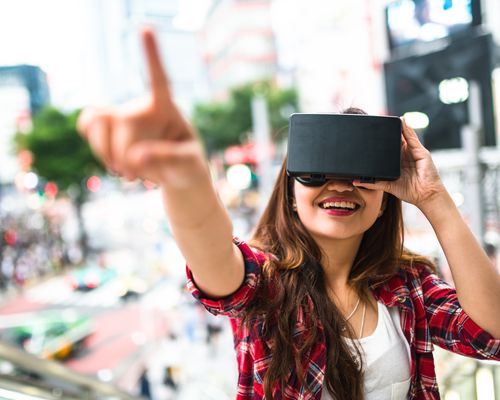uCrowds start-up for simulating crowds has its roots in award-winning ITEA project Metaverse1

How can a city accommodate 500,000 people during an event? How long does it take to evacuate a train station? Where and when can potentially dangerous situations occur, how can we detect these, and what can we do during an event to avoid these situations? Simulating big crowds can be of vital importance to be better prepared. To answer this vital demand, start-up uCrowds has researched and now offers a model for simulating crowds in big infrastructures, events or computer games.
Roots in ITEA
The roots of uCrowds can be found in the award-winning ITEA project Metaverse1, which ran from October 2008 to March 2011. The project made it possible for information to be shared between different virtual worlds and the real world and has led to the development of an international standard.
Roland Geraerts, Assistant Professor in Crowd Simulation and founder of uCrowds, was an associate for Utrecht University in the Metaverse1 project and co-responsible for the work on path and camera planning, together with two colleagues. Their main contribution was a new path planning method, i.e. the Corridor Map Method, which was integrated (through a web service) into the virtual world of Second Life [1]. This method formed the basis for the crowd simulation framework.
“The ITEA programme has given us a rich ecosystem of researchers, entrepreneurs, and users which allowed the completion of the whole value chain from fundamental research to product. Moreover, the project has greatly enriched our network”, explains Geraerts.
At the department of Information and Computing Sciences, Geraerts and his colleagues have now created a software package for efficient crowd simulation in multi-layered 3D dynamic environments (such as a train station). The framework generates a compact but complete representation of the navigable areas in an environment so that the simulation can be run efficiently and accurately. The simulation itself consists of five levels of planning, including planning global paths and adjusting local motions to take collision avoidance and social group motions into account.
Virtual simulation, clear exploitation
The uCrowds software already has clear exploitation results. For example, in collaboration with its partner Movares, it was used to investigate the amount of time it takes to evacuate several metro stations of the North/South metro line in Amsterdam

Together with this partner, they have also analysed a large range of scenarios that could occur during the Grand Départ of the 2015 Tour de France in Utrecht, as the city wanted to know whether the crowd would be safe should the city draw anywhere from 600,000 to 800,000 spectators. Based on the simulations, the city decided to move some fences, installed some pedestrian bridges, and had one-way traffic at certain places.

Furthermore, an augmented-reality crowd simulation demo was given to all EU ambassadors and policy makers who paid a visit to Utrecht on May 20, 2016 to experience games for green, healthy, and smart region. The demo displays a simulation inside a part of the city. Users can interact with the simulation by inserting or removing illuminated blocks. This allows them to play with different scenarios in an interactive and intuitive way.
Finally, a plug-in was created for a popular game engine, Unity3D, to enrich computer games with big and believable crowds.
For a safer and better world!
With his start-up uCrowds, Roland Geraerts dreams to become the worldwide supplier of software for simulating crowds in big infrastructures, at events, or in computer games. He hopes to make the world “a bit safer and more fun”.
More information:
www.uCrowds.com
www.ucrowds.com/casestudies
https://itea3.org/project/metaverse1.html
[1] José Manuel Cabello, José María Franco, Antonio Collado, Jordi Janer, Samuel Cruz-Lara, David Oyarzun, Albert Armisen, and Roland Geraerts. Standards in Virtual Worlds Virtual Travel Use Case Metaverse1 Project. Virtual Worlds Research (JVWResearch) - MPEG-V and Other Virtual Worlds Standards, 4(3):1-29, 2011.
Related projects
Metaverse1
Global standards among real and virtual worlds


